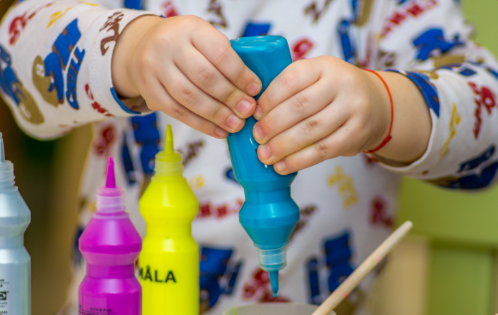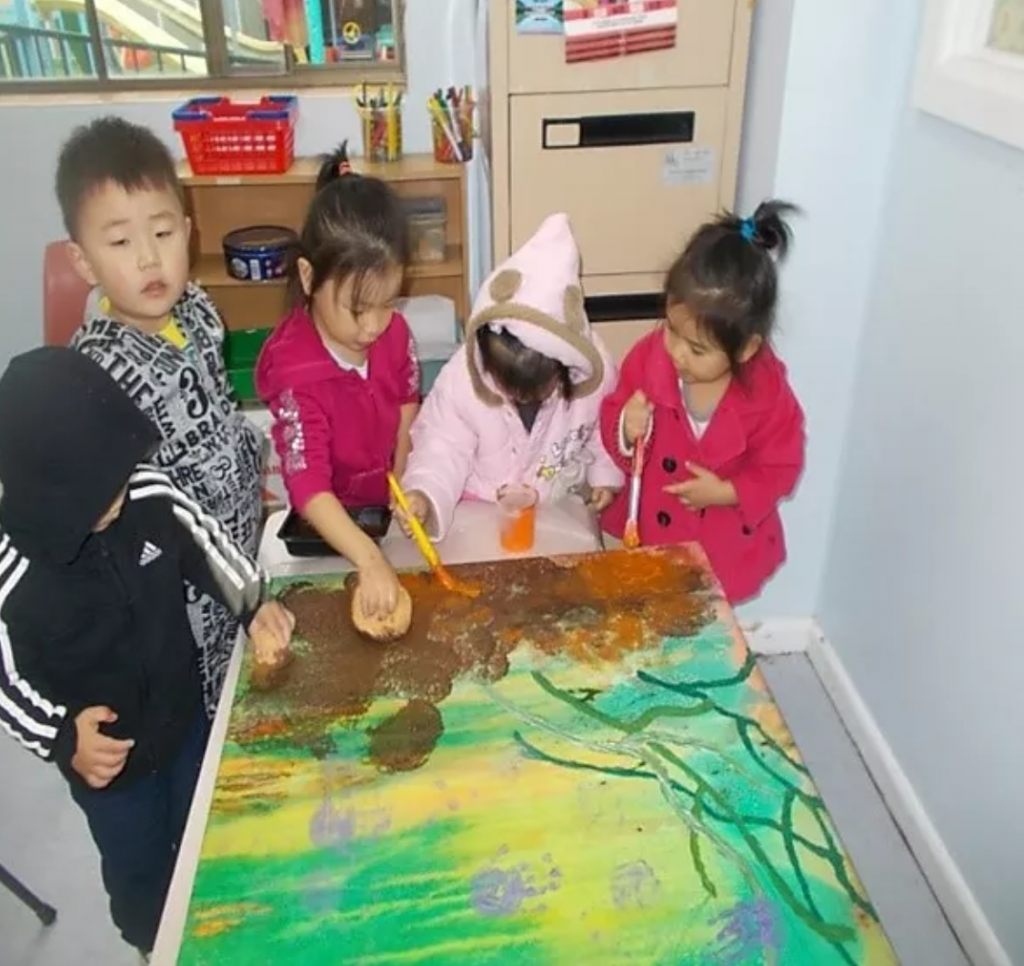
The importance of Creativity/ Art in early childhood (Hurstville Child Care Centre)
Art has always been an important part of childcare programs as it helps to develop the whole child. Art helps to ripen Social and Emotional Development- Whether it be experimenting with the different textures of playdough and clay, drawing with texta colours, crayons, pencils, pastels, paint, collage and charcoal. Drawing, in particular is an activity that allows them to symbolize what they know and feel. Social and emotional development also develops in how slowly or quickly the child finishes their artwork.
Allowing the children to decide what they would like to use allows them to make independent choices and judgments, thus improving their self-esteem, self-help skills, and getting praise and encouragement from others as well as being able to show other peers and be able to describe their artwork and their ideas as well as helping others with theirs. Art and creativity also helps to improve and expand vocabulary.
It helps to grow Cognitive Development- By allowing children to experiment, make mess, use trial and error and motion to explore the way the different materials can change the texture and look of an art work. Art also develops cognitive skills by allowing the child to think about what they want their artwork to tell their peers and family where it be in the style of abstract, realism or surreal. This ability to use symbols in the early stages of drawing and art provides a scaffold for children to later link a word to a symbol then to the beginning of starting to write.
Art helps to evolve Physical Development- Yes art can also help with fine motor skills by improving hand control (such as colouring in a stencil) and by using different types of equipment such as spray guns, water paint, sticks, food colouring – etc. Gross motor by throwing balls covered in paint, at a canvas, hand and eye coordination (which is essential for spacing of words and writing) and children can experiment and explore different types of ways different paints can blend and change depending on how they are placed.
Art helps to improve Creative Development- by allowing children to expand their imagination and in doing so achieving the impossible.
Here at CASS Hurstville we believe art and creativity is truly important to the indoor and outdoor programs. Our children have been involved in amazing art projects which involved a lot of time, noise, mess and excitement. Some started as Educator initiated projects though soon became about what ideas the children had and expanding what they may not have seen or used before. We use spray paint (food coloring), texture paste, slime, sand, salt, acrylic paint, sponge painting, painting with brushes, hand painting, and using recycled objects such as soft drink containers.
We believe that art and creativity belong in the center and have seen the benefits that each of the unique children bring to each of the experiences. We have noticed that the confident and social children start sharing and assisting the less confident children, we have seen the shy children start to express their own ideas and get involved in the experiences and improve their self-esteem and gain and start friendships while being a part of an art/ creative experience. We have seen each child’s art works, imagination, creativity, and ideas grow as they do.
Creativity in our program at CASS
An example of one of the creative projects the children participated in during their time at our center: Today our teacher brought in this big white paper. She told us it was something called a canvas. She took us out side and showed us how to use the spray paint. It was very fun and cold as we squirted the paint onto the canvas, the wooden fence and the floor as well as our hands and faces too. It was very messy but really fun. C said that she liked how the colours mixed together to form new colours. I liked how messy it was my hand went bright red.
After a few days of spray painting we were able to create lots of different colours on the canvas. The teacher brought our painting back to school with green squiggles and this white stuff painted on it. She called the white stuff texture paste. We began to create more creative fun as the teacher let us paint our hands and we covered the painting with our hand print. The teacher then asked us to feel the white stuff. E told her that it felt like rocks, while O said it felt like sand. I don’t think it felt smooth like a rock to me it felt rough and bumpy. We then got to paint it with brown and orange paint, using a sponge and thick paint brushes.
The painting was back at school again with different coloured hands. The teacher told us that some of the hands had faded and that she had painted over them so they could be seen. The teacher asked us what we wanted to put on the rocks. O suggested shells I thought it was a good idea. We then started to point the rocks using a sponge and brush with this white paint the teacher called glue. We than took a handful of sand and began to throw it onto the canvas. It was so messy as the sand went over the floor but looked very cool. We then began to use a small bottle of glue and with the teachers help began to stick on different shells and a star fish. When the Educator brought it in again she gave us some different sea animals and we told her where to put them on the canvas. The next day our art work was hanging up in the school I really like what we made I hope to make another one soon.
We as educators and as a center believe in open ended play. We feel that this is important way that children can begin to build and explore their feelings and creativity and imagination in various ways. By having a free play opportunity in our program and practice we start to notice even the quieter/ shy children participate and add their ideas in to the art and experience. By creating this sort of experience which is open ended the children also develop a sense of accomplishment, satisfaction, can recognize their achievements and gain confidence when approaching their peers which also contributed in the experience.
How can we help?




 (02) 9789 4587
(02) 9789 4587